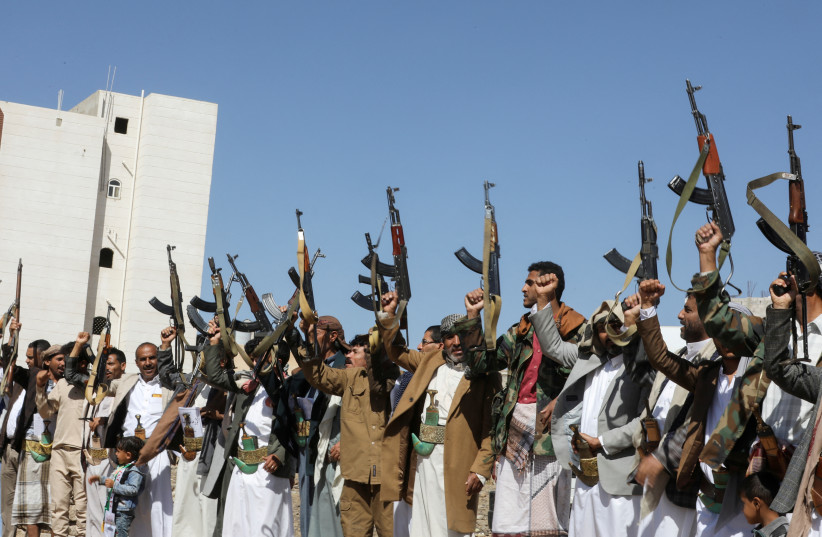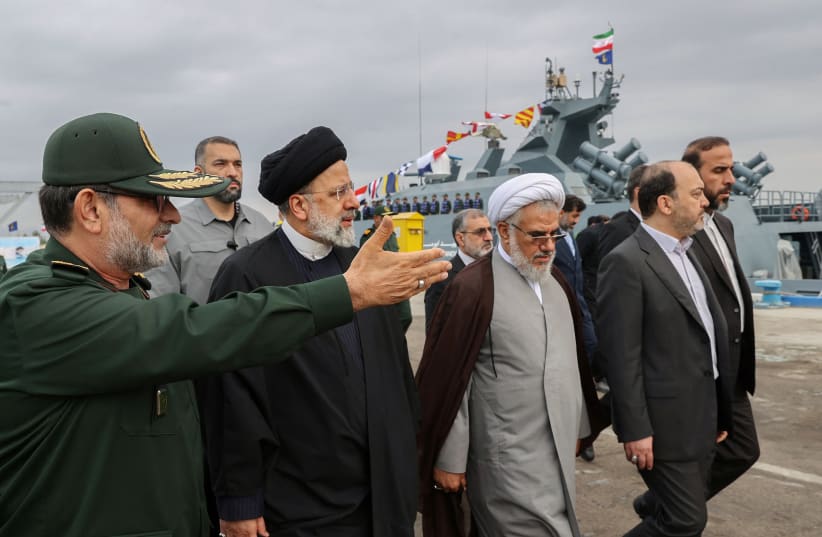The Hamas’s brutal onslaught on the Jewish communities bordering the Gaza Strip, the massive Houthi disruption of navigation in Bab al Mandab and the Red Sea, and Kataib Hezbollah’s attacks on American troops in Syria and Iraq reignited the old debate on how much influence Iran exerts on its proxies. Some observers argue that the Islamic Republic has little control over the decision of its militias to initiate the attacks. This narrative demonstrates profound ignorance of the extensive oversight and control of the IRGC Quds Force (QF) over its proxies.
When Ayatollah Ruhollah Khomeini came to power in 1979, he promised to fulfill his “sacred mission” of spreading the Islamist revolution in the Middle East. To further this goal, the IRGC-QF perfected an asymmetrical conflict strategy of creating Shi’ite militias as part of the “Axis of Resistance, or “Ring of Fire.” In 1982, Hezbollah was launched in Lebanon, followed by several Iraqi militias under the banner of Hashd al-Shaabi (the Popular Mobilization Forces), the Houthis in Yemen, the Shi’ite Liberation Army (also known as the Shi’ite Legion) in Syria, along with Hamas and Palestinian Islamic Jihad.
For forty-five years, the regime has been funding, training, arming, and directing these groups to create instability and chaos in their home turf and in the region by fighting Israel, Saudi Arabia, and US forces while maintaining plausible deniability. Western analysts and policymakers, reluctant to confront the theocrats in Tehran, perpetuated the charade that the terror groups are somehow independent decision–makers by their willing suspension of disbelief.


Iran exonerates itself from blame
THE ISSUE became especially urgent because the events were game-changers, crossing all Israeli and American redlines, and making the usual “plausible deniability” untenable. Even the regime felt compelled to respond, crafting a new narrative to exonerate itself. While admitting that “Iran funds, arms, and trains the militias, they do not necessarily follow Iran’s orders.”
Two recent articles in Haaretz and a piece in The Wall Street Journal bought into the narrative, suggesting that the regime had little control over the decision of its militias to initiate the attacks. These and other observers who propagate its narrative demonstrate profound ignorance of the QF’s moves to increase its oversight and control of its proxies.
The first such step occurred in the wake of the Second Lebanon War in 2006. Hezbollah, in an attempt to release its fighters from Israeli prisons, launched numerous missions to kidnap IDF forces. In one such mission, three Israeli soldiers were killed and two more were abducted.
Hezbollah’s Secretary-General Hassan Nasrallah and his chief of operations Emad Mughniyeh considered the attack routine, but Israel responded with force. The 33-day war killed some 1,300 Lebanese, displaced one million, and severely damaged Lebanese infrastructure. Dahiya, a neighborhood in Beirut where Hezbollah was headquartered, was heavily damaged, along with other Shi’ite parts of the country.
The cost of rebuilding was staggering, with Iran shouldering much of the reconstruction project through Hezbollah’s construction company Jihad al Bina. Tehran also bore the cost of replenishing most of the military arsenal, including the Zelzal and Fajr rockets. Hezbollah lost nearly 700 Iranian-trained elite fighters, compromising its fighting ability.
IRGC-QF was furious with the recklessness of Nasrallah and Mughniyeh. A documented complaint from the Iranian Supreme National Security Council (SNSC) accused Hezbollah of reckless adventurism that “wasted” Iran’s military investment. After Mughniyeh’s assassination in February 2008, Qassem Soleimani, the head of the QF, appointed an IRGC commander by the name of Hassan Mahdavi, also known as Mohammad Reza Zahedi, to replace him. Sending Mahdavi signaled the guards’ intention to keep a tight rein on its model proxy.
SINCE THEN, the supervision has tightened further. Suleimani ordered the construction of regional QF headquarters in Iraq, Syria, and Lebanon and Yemen: The Gaza Strip and the West Bank are controlled through Hezbollah.
For instance, Khalil Zahedi (also known as Abu Mahdi Zahedi) currently plays a pivotal role in the Quds Forces’ operations in Syria, overseeing three significant units: Unit 400, led by Hamed Abdallahi, is responsible for arms transfers on the Iraq-Syria axis under the guise of humanitarian aid convoys; Unit 190, led by Behnam Shahriyari, is responsible for overseeing the financing of proxies; and Unit 1500, led by Ruhollah Bazqandi, handles the IRGC-QF counterintelligence.
Rahim Aghdam, a Guard’s commander at the Hazrat Zeinab Force camp in Syria, controls and directs the Fatemyoun and Zeynabyun Brigades made up of Afghan and Pakistani fighters, respectively. In Yemen, Abdulreza Shalai, the commander of the QF headquarters Adulreza Shalai is leading the Houthi’s naval assault.
Controls became even more stringent after an American strike killed Suleimani on a trip to Baghdad in January 2020. Sazman-e Ettelaat-e Sepah, the Guards Intelligence Department, suspected that an informant from the Popular Mobilization Forces provided details about Suleimani’s trip.
His successor, Ismail Ghani, seized upon the concern to create a force fiercely loyal to the regime from the ranks of each of militias. This handpicked force formed covert groups that bypassed the militias’ hierarchy. They were trained in drone warfare, firing rockets, planting bombs, surveillance and espionage.
These new covert groups have been responsible for sophisticated attacks against US forces and its allies in the region. As one Iraqi security official noted, they are made up of “individuals chosen with great care to carry out attacks [against US forces] and maintain total secrecy.” Another Iraqi security source noted that “these new groups take their orders from them, not from any Iraqi side.”
The Quds Force’s high level of oversight over the proxy groups and its extensive embedding within the militias casts doubts on the regime’s new narrative. However, as before, the combination of the media’s willingness to suspend disbelief and its ignorance of Quds Force’s intricate oversight system cannot challenge the lie.
The writer is a senior fellow at the Philos Project.
